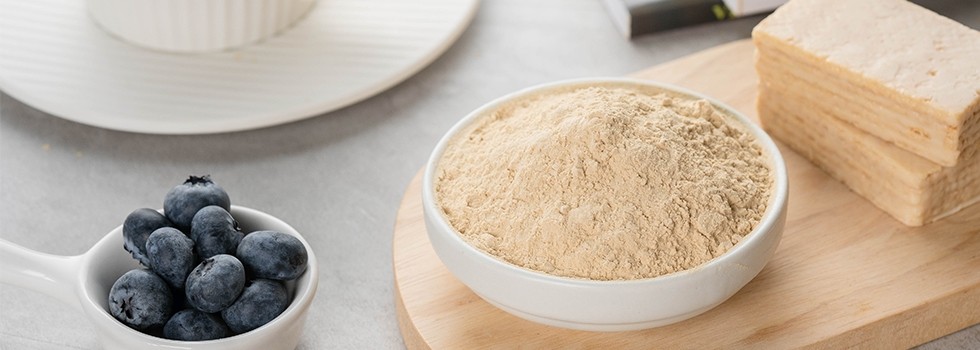Promotional Features
Yeast Protein: closing the protein gap with bountiful nutrition
The global demand for protein sources has never been greater. With the world population rising, a gap of 250 million tons between the availability of traditional protein sources and global demand is forecast by 2025.1
Consumer dietary habits and expectations are evolving, too, driven largely by concerns around environmental impact, health, financial cost and sustainability. The innovation and production of alternative protein sources is an active area of development for manufacturers. Microbial proteins, a burgeoning market that’s forecast to reach US$2.6 billion by 20232, are emerging as a favorable way to meet protein demand. Thanks to advances in high efficiency production and environmental sustainability, alternative protein cultivated by microbial fermentation, using bacteria, yeast, fungi and animal cells as the production host, offers a sustainable and nutritional solution for applications across industries such as food ingredients, probiotics and food culture.
Yeast protein within microbial fermentation
The cultivation of nutritional yeast protein on an industrial scale is fast gaining market share within microbial fermentation: in 2021, the market was worth US$195.35 million; by 2030 it’s projected to reach US$522.13 million.3
Nutritional yeast is already widely established within the food industry, from dairy and protein drinks to snacks and baked goods, as well as functional products such as dietary supplements. With a naturally high protein content and a healthy composition of digestion-boosting amino acids, yeast protein is low fat and cholesterol-free and has a nutritional value that’s closer to animal protein than plant protein.
Without an animal source, yeast protein eliminates the risk of antiviral infection or antibiotic residues, thereby appealing to health-conscious consumers and those with dietary or religious restrictions. Furthermore, in contrast with traditional protein sources, yeast offers a bountiful supply. Yeasts are living microorganisms and are widespread in the natural environment. And their potential is huge with new species discovered every year. Currently, around 1,500 species are known, yet this is just 1% of their entire population.4
Nutritional make up
Yeast protein derives from Saccharomyces cerevisiae, a species commonly used in winemaking, baking, and brewing. It has a naturally high protein content of 60 to 80% and a good distribution of essential amino acids compared with plant protein such as rice, soybean and pea. Furthermore, in vitro trials carried out by high-tech yeast company Angel Yeast have shown yeast protein is a slow-digesting and a slow-release protein, similar to casein – the slow-digesting dairy protein, often used in food supplements. These qualities prolong the feeling of fullness which controls the sense of hunger and the desire to eat.
Functional benefits
Other studies indicate that yeast proteins can significantly reduce the histological and functional deterioration of the intestinal tract caused by ageing. They can also play a role in slowing down cellular senescence by increasing the diversity of the intestinal flora which benefits cell renewal and cell repair.5 Studies tackling muscle ageing by way of yeast protein supplementation have had positive results, associated with the gut microbiota, with the effect on the skeletal muscle of older mice shown to be higher in the yeast protein group than in the control group.5
Green manufacturing
The environmental credentials for nutritional yeast protein are strong, too. The manufacturing process does not place demand on arable land, neither does it compete directly with crop food products for fertile soil and fresh water. And, because it produces lower CO2 emissions than traditional farming, it has a clean environmental footprint that does not worsen existing pressures. Thanks to evolving efficiencies in technology, the intensity of yeast protein fermentation production is continually being enhanced and maximised, across four key areas:
Raw material optimization Any material that can satisfy the growth of yeast can be used as a raw material for fermentation to produce yeast protein.This offers huge potential for the protein production industry and its subsequent beneficiaries across the food, animal feed and pharma industries.
Strain development Thanks to biotechnology, high yield target product strains can be selected to meet high efficiency in the production of yeast protein.
Biological process design Optimizing the fermentation process of yeast protein achieves high efficiency on large scale, resulting in low-cost production and financial benefits across multiple sectors.
Sustainable industry leader
Leading yeast extract manufacturer Angel Yeast is addressing global challenges of world population, nutrition and sustainability by researching and developing a nutritional protein source that is affordable, sustainable, environmentally friendly. Its annual production output of 10,000 tons of yeast protein goes into a comprehensive portfolio of tailor-made nutrients designed to meet the diverse nutritional requirements across specific fermentation industries.
In a move set to expand its annual yeast protein production capacity to 30,000 tons, in 2021 Angel Yeast established a joint venture to acquire yeast and yeast extract-related assets of Bio Sunkeen, a producer of yeast, food ingredients, animal feed and organic fertilizer, further consolidating and strengthening its position on a global platform. Against a backdrop of environmental and global pressures, moving towards closing the protein gap may well be a challenge within reach.
References
1, 2. Erdyn (2020).
3. Verified Market Research Global: Nutritional Yeast Market Size By Product Type (Inactivated Dry Yeast, Fortified Yeast), By Application (Food Industry, Beverage Industry, Nutrition), By Nature (Organic, Conventional), By Geographic Scope And Forecast.
4. Jach M.E., Anna Serefko A., Maria Ziaja, M., et al. Yeast protein as an easily accessible food source. 2022 Jan 11;12(1):63. doi: 10.3390/metabo12010063. PMID: 35050185; PMCID: PMC8780597.
5. Liao Y., Zhou X., Peng Z., et al. Muscle aging amelioration by yeast protein supplementation was associated with gut microbiota. Journal of Functional Foods 89 (2022) 104948.




